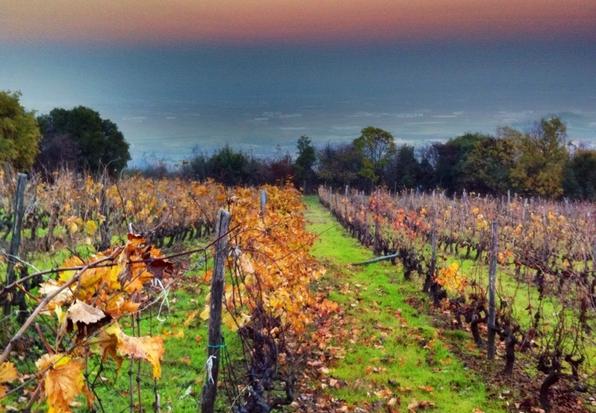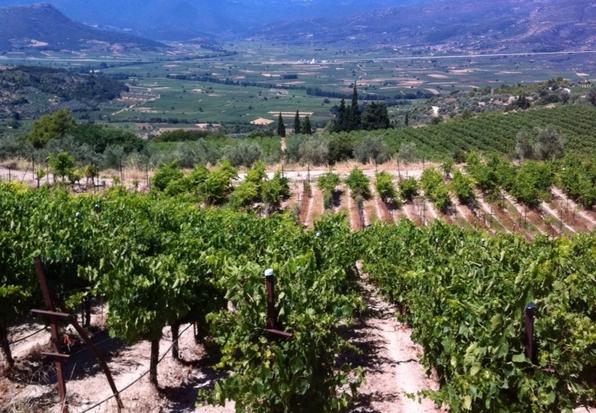By Markus Stolz
Editor's note: This post was originally published on the blog Elloinos (a great resource for anyone interested in Greek wines) and republished with permission.
Amyndeon
Amyndeon is an area in the far northwest of Greece, towards the border of Albania and FYROM. It is named after the grandfather of Alexander the Great. Amyndeon has the coolest climate of all the wine producing regions of Greece, with lots of snow and ice during the winter months. Xinomavro is the most important grape variety, grown since antiquity. The area belongs to the Florina regional unit of Macedonia, where some of the very best local cuisine can be found. Florina peppers in particular are known for their rich sweet flavor and are served with traditional breakfast.


Naoussa
Naoussa belongs to the Imathia regional unit of Macedonia. It is only a little more than an hour's drive away from Amyndeon, yet here one finds orchards, producing peaches, apples, cherries and other fruits. The ruins of the ancient School of Aristotle lie very close to the regional vineyards. It is here that the greatest philosopher of antiquity taught the son of the King of Macedonia Phillip II, Alexander, and the other nobles of the Macedonian court. Alexander was later the first Greek ruler to put his own face on Greek coins. Previously, only the faces of Greek gods or goddesses where used.
Again, Xinomavro is the King of the grape varieties grown in this historic region.


Mount Athos
Mount Athos, a world heritage site, is an orthodox spiritual center since 1054. It has enjoyed autonomous statue since Byzantine times. The 'Holy Mountain' is forbidden to women and children. About 20 of the monasteries are presently inhabited by some 1400 monks. Vine cultivation has always been among the most important occupations of the monks.



Evia
Evia, also pronounced as 'Euboia', is Greece's second-largest island, just after Crete. It is located along the east coast of mainland Greece, not far from Athens. Evia is one of those 'secret' islands that the Greeks seem to keep for themselves. While its big brother Crete is much more important for the Greek wine industry, Evia is home to some fine artisanal wine producers.



Few know that Greece is one of the most mountainous countries in Europe. An old Greek legend says that when God created the world, he sifted all the soil onto the earth through a strainer. After every country had good soil, he tossed the stones left in the strainer over his shoulder and created Greece. Of course, this poor soil is an advantage when growing vines!
Some interesting facts: Greece has more than 2000 islands, of which approximately 170 are populated. Over 40% of the population lives in the capital Athens, which has been continuously inhabited for over 7000 years. Greece has more archaeological museums than any other country in the world. No point in Greece is more than 85 miles from water. And yes, there are vineyards planted right next to Athens.
Peloponnese
The Peloponnese is a large peninsula in southern Greece. It has two land connections with the rest of Greece, a natural one at the Isthmus of Corinth, where the Corinth Canal was constructed in 1893, and an artificial one by the Rio-Antario bridge, completed in 2004.
The Peloponnese accounts for 31% of the total wine production in Greece. Perhaps the most important sub-region is Nemea, pictured below. Nemea is the heartland of the Agiorgitiko grape variety. Some of Greece's highest altitude vineyards are located in the area of Kalavryta, northwest from Nemea, reaching up to 3300 feet. The Monastery of Mega Spileo is placed about 7 miles from the town of Kalavryta. It is built on the slopes of a steep side of a rocky hill, at a height of 3031 feet. It was built in 362 AD, likely being the oldest Monastery of Greece.


